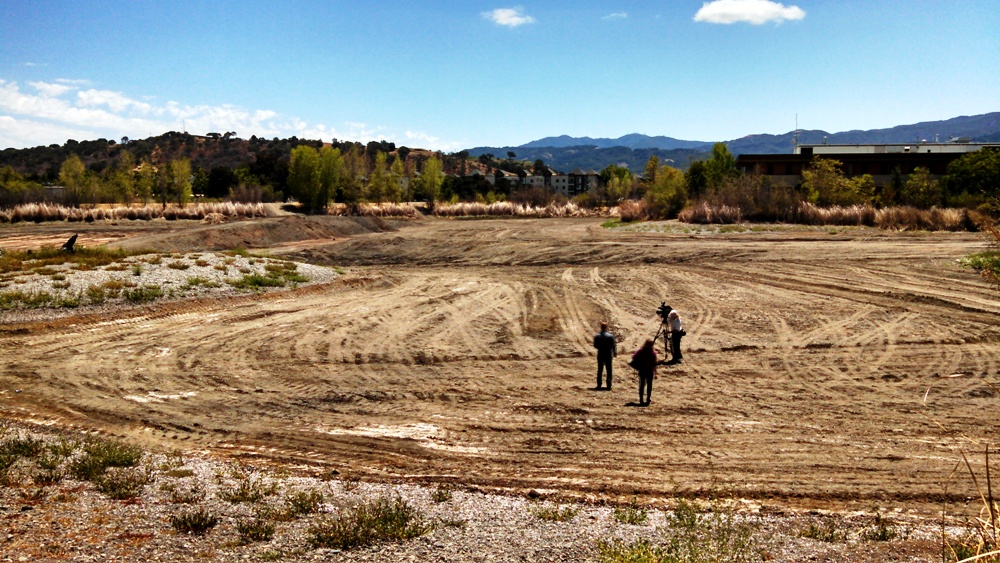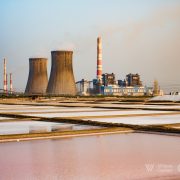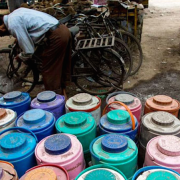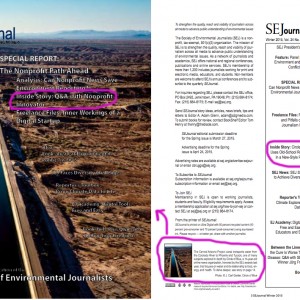California Regulators Hint at Forthcoming Urban Water Restrictions
The biggest water users will be required to conserve more than the thrifty.

In ordering California’s first-ever mandatory water restrictions, Governor Jerry Brown hopes to create a new reservoir of water for drought-stricken California — not by building a dam but by reducing consumption.
His plan is beginning to take shape, with four tiers of proposed cuts that range from 10 percent to 35 percent for urban areas, according to a discussion document released Tuesday evening by the State Water Resources Control Board, a regulatory agency.
California cities with daily residential water use greater than 165 gallons per person face a 35 percent cut while those using less than 55 gallons per person must trim demand by 10 percent, the four-page document states. The two other tiers are 20 percent (55 gallons to 110 gallons) and 25 percent (110 gallons to 165 gallons). September 2014 is the baseline month for determining water use.
On April 1, the governor ordered a statewide reduction in urban water use of 25 percent. Achieving that goal would save 1.3 million acre-feet over nine months, according to the Water Resources Control Board, which is equal to the amount of water currently stored in San Luis reservoir, the state’s fifth-largest. Conservation, in effect, is the equivalent of adding a big new reservoir to a state that is desperately searching for water in a fourth year of a drought emergency.
Voluntary conservation measures in place today have resulted in a lackluster performance. Statewide conservation was just 2.8 percent in February, according to data released earlier on Tuesday.
Targeted Cuts
The four tiers are an attempt at fairness. Brown gave the Water Resources Control Board the authority to take into account the sacrifices and conservation investments that cities had already made.
Urban water use in California depends on geography and economics and varies significantly. Cities using the least amount of water per person are generally located on the Pacific coast or near the San Francisco Bay. The highest users are wealthy districts in Southern California such as Beverly Hills, desert cities around Palm Springs, and cities in the inland Central Valley, a 440-mile stretch of farmland from Redding to Bakersfield.
Most of the state’s 411 large water utilities — those that serve more than 3,000 people and are covered by the regulations — will fall into the higher conservation tiers. Some 135 utilities are in the 35 percent tier; 132 in the 25 percent; and 126 in the 20 percent. Just 18 face a 10 percent cut.
Small utilities — those serving fewer than 3,000 people — will be required to cut water use by 25 percent regardless of current consumption.
The tiers for large suppliers are not set in stone. The Water Resources Control Board calls the document a “draft framework” and is accepting public comments until April 13.
The water board asks a number of questions in the document about how to structure the restrictions.
“Are there other approaches to achieve a 25% statewide reduction in potable urban water use that would also impose a greater responsibility on water suppliers with higher per capita water use than those that use less?” the document states.
After refining its regulatory approach, the board will publish draft regulations on April 17 and adopt the final version at a May 5 meeting.
Brett writes about agriculture, energy, infrastructure, and the politics and economics of water in the United States. He also writes the Federal Water Tap, Circle of Blue’s weekly digest of U.S. government water news. He is the winner of two Society of Environmental Journalists reporting awards, one of the top honors in American environmental journalism: first place for explanatory reporting for a series on septic system pollution in the United States(2016) and third place for beat reporting in a small market (2014). He received the Sierra Club’s Distinguished Service Award in 2018. Brett lives in Seattle, where he hikes the mountains and bakes pies. Contact Brett Walton










One of the true villains of the water shortage is not so much the green grass that is popular to vilify, but the woefully inefficient systems that spray water all the place. It’s not unlike the “gas guzzler” cars that wasted fuel. Our emerging tech technology can make a huge difference in saving water by directly attacking true waste.
The only way to solve the problem is to embed computing power to the sprinklers themselves (think inkjet printer). With efficient digital sprinklers, people use far less water and still have “a nice little green lawn” for their kids to play on … people want lawns.